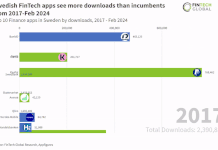There are many benefits to a more globalised world. However, one of the key threats posed by an increasingly digitised and connected world is the scourge of money laundering.
With money laundering becoming more and more common worldwide, the answer by many organisations in financial services has been to throw money at the problem. However, as a recent post by RegTech firm Sentinels has detailed, this may not be the answer.
With the creation of AI and ML tools in financial services, the fight against AML has evolved, with regulators and organisations required to be more alert than ever. This intensifying of the practice has led to expenditure on fighting money laundering to rocket, with the annual worldwide spending on AML compliance exceeding $180bn a year in 2020. However, this is appearing to be to no avail – with between 2% and 5% of global GDP continuing to be laundered every year.
Why is this the case? Sentinels detailed that the dramatic increase in transaction volumes holds some responsibility, with many consumers turning to cards and other e-payment types, which can increase risk. However, there is a second side – which is that compliance officers and transaction analysts simply require more help. This means better monitoring tools and access to more transaction data, before they are able to improve their identification and criminal activity elimination practices.
The firm said, “Legacy transaction monitoring systems are no longer up to the task. Inaccurate identification is allowing fraud to slip through the cracks. Many systems are also generating an unmanageable number of false-positives alerts, tying compliance officers in knots as their investigations routinely come to nothing.”
What is the answer?
How can financial institutions deal with this huge issue? Currently, bank-to-bank cooperation of AML is not very common, something which financial criminals are aware of. Combine this with the fact money launderers use more than one bank, and the challenge gets even greater.
Sentinels said, “Banks monitoring their own transactions is never going to be enough. Dirty money is almost never washed through a single entity or via one financial institution. Money is placed, layered and integrated across an elaborate spiderweb of entities in order to obfuscate its origins and frustrate its supervision. And, for the most part, it works. Accurate estimates are hard to come by (by definition) but it’s broadly acknowledged that just 1% of dirty money gets seized.”
If banks really want to get serious in fighting AML, then ‘combine and conquer’ is the way to go, Sentinels believes. The company stressed that historically, many banks have fought the AML battle on their own due to competitive and commercial tensions and data privacy tensions amongst other things.
Sentinels stated, “But consider this: what if a third-party provider, in addition to supporting PSPs and banks with their transactions, also enabled them to perform network analysis across multiple financial institutions without violating compliance mandates? Extending this thought, imagine the crime fighting potential of an approach that combined ML algorithms with open banking APIs to aggregate and analyse transaction data from thousands of banks. Think of the visibility that could be generated (potentially uncovering entire criminal networks) and the amount of financial crime that could be halted in its tracks, in real-time, as a result.”
What are the key factors that enable such cooperation on AML? The company underlined that while taking a cross-institutional approach to transaction monitoring and risk profiling goes against the instincts of most banks, as well as being tough to achieve technologically and regulatory-wise, there is a way forward. A way to enable cooperation include negotiating and agreeing security and data sharing guidelines ahead of the cooperation, then protocols of communication and feedback mechanisms can be put in place to alert banks of potential criminal activity.
Ownership and control of the platforms used to share data should still remain in the hands of individual banks, as well as suspicious data still need to be anonymised, encrypted and AI-synthesised before it can be shared in the network. Also, each bank will be able to act based only on the grounds of its own data, not in line to a broader investigation.
Sentinels also noted it was key to remember that ‘such mutual transaction monitoring efforts must never be seen as a substitute for a bank’s internal fraud monitoring’ and should instead be complementary and used to bolster a financial institution’s risk management.
Sentinels concluded, “Data is the answer, but it’s also the problem. Most financial institutions will have a mix of datasets and transaction monitoring systems already in place. These will be difficult to harmonise and share, so that insights can be drawn across them. They will also vary considerably from bank to bank.
“Should other institutions adopt a similarly collaborative approach, it will significantly increase the business value of their transaction risk investigators and, finally, enable a coordinated – and substantially more powerful – response to the money laundering menace.”











